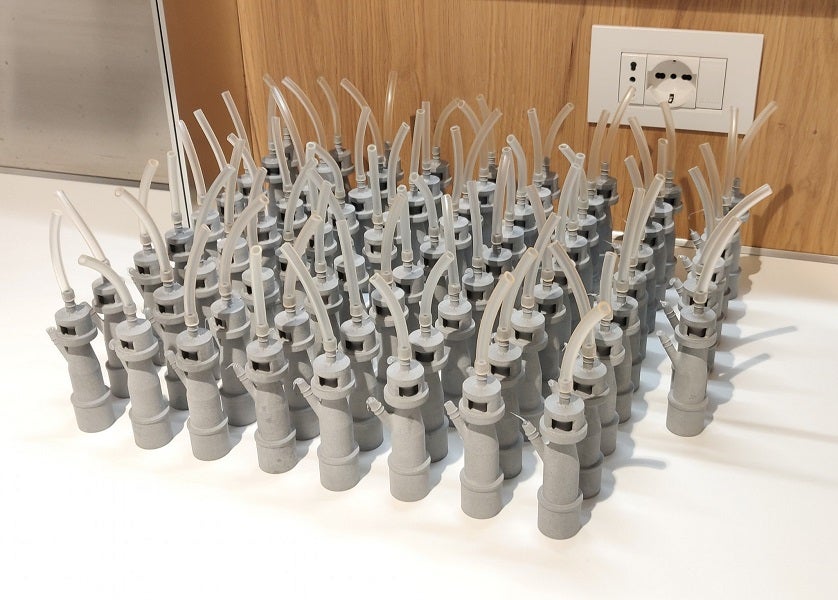
Italian 3D printing start-up Isinnova has saved the lives of ten Covid-19 patients after developing a replacement ventilator valve when supplies at Chiari hospital in Brescia ran dry.
However, the firm may now be facing legal action from the manufacturer of the original part, according to Italian newspaper La Stampa.
The Bresica region of Italy has been hit hard by Covid-19, and valves were urgently required so that intensive care patients could be placed on ventilators, but Chiari’s regular supplier wasn’t able to provide the devices in time.
Digital fabrication company FabLab founder Massimo Temporelli was then contacted by the editor of the Giornale di Bresica to see if the part could be 3D-printed instead.
Through a network of additive manufacturers, word eventually reached local 3D printing start-up Isinnova founder & CEO Cristian Fracassi. Fracassi delivered a 3D printer directly to the hospital and was able to redesign and produce a new valve piece within just six hours.
The valves were printed using a filament extrusion system on location at the hospital. This involved pelting plastic wire and depositing it layer-by-layer to make the final product.
More valves were later printed by another local firm, Lonati, using a polymer laser powder bed fusion process and a custom polyamide-based material. In this process, a laser is used to melt and fuse a powder together to build up layers of an object.
When Isinnova contacted the manufacturer of the original valves for blueprints it could use as replicas, the company allegedly declined the request and threatened to sue for patent infringement. Fracassi and his colleague Alessandro Ramaioli chose to move ahead anyway by measuring the valves and 3D-printing three different versions to test.
Speaking to TPI, Fracassi said: “I have lawyers who are evaluating the matter. I am not dealing with it personally because I prefer to devote myself to [the 3D designs]. There were people in danger of life, and we acted.
“We have no intention of profiting from this situation. We are not going to use the designs or product beyond the strict need that forced us to act.”
It is unclear how durable the 3D-printed valves are or whether they can be sterilised or reused. However, considering the original part retails at around $11,000 and the 3D-printed parts cost just $1 to make, manufacturing more shouldn’t be a significant difficulty.
Some commentators have criticised the actions of the engineers, as the valves were used without safety certification being acquired.
Speaking to La Stampa, Temporelli said: “When there’s no time and people are risking their lives, you can’t stop because of bureaucracy.”
Other medical facilities throughout Italy have now been in contact with the engineers regarding ventilator valve shortages.



